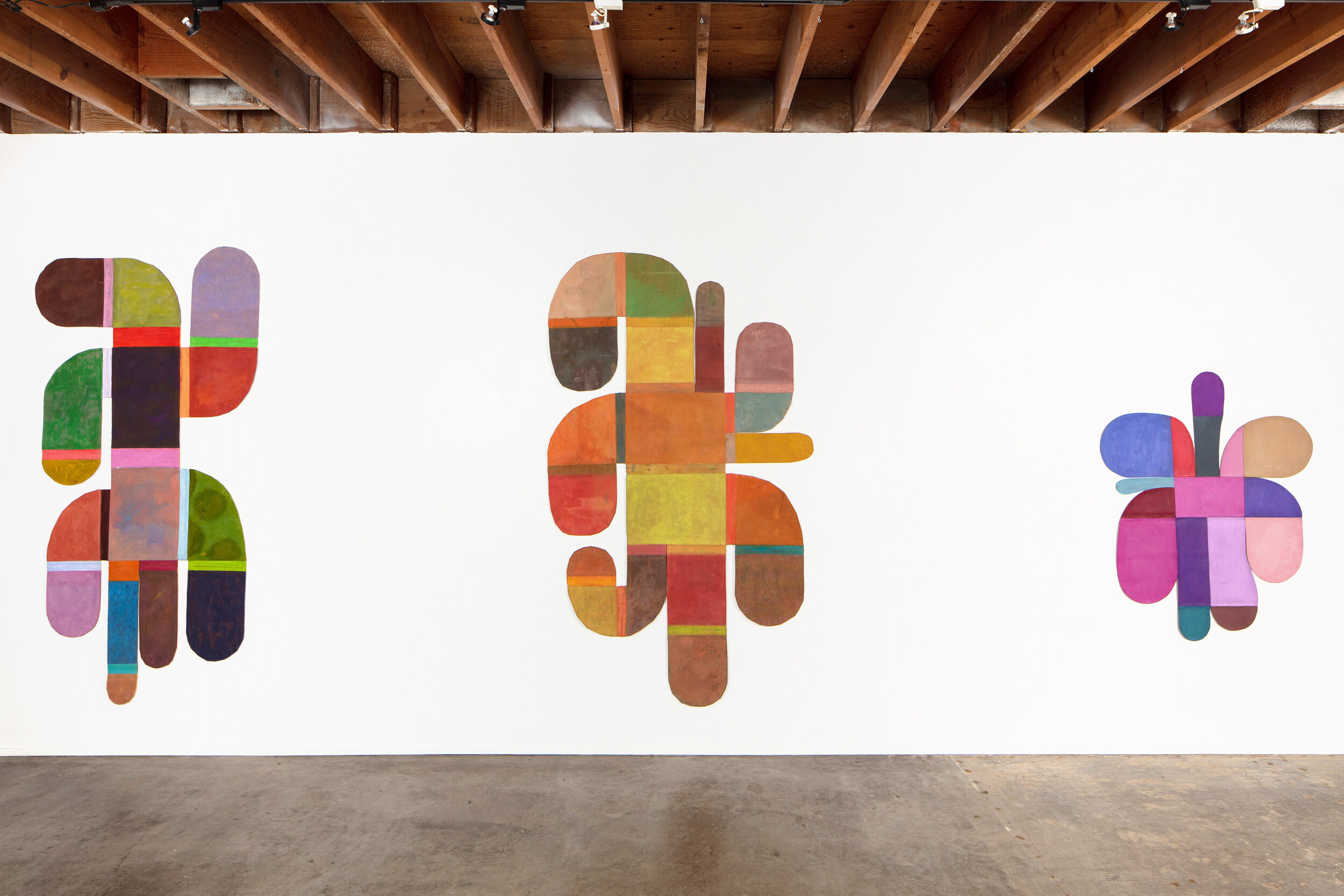Zuriel Waters
Bug City
July 3 – August 1, 2021
Bug City
by J.A. Godley
Whose bugs are these?
No doubt, they belong together. But to whom do they belong? The artist, Zuri Waters? Is the answer so simple? One feels a sense of faint recognition, like deja vu. I have seen them before, as if I have been in this same situation at least once, possibly in some primeval past. They come at me from all sides-- is it a welcome party? Or an invasion? I cannot escape a nagging feeling that this “city” did not always belong to them. I search for analogs, metaphors. There is no escape from the tyranny of language and I flee to it, retreating from their eyeless gaze. The title makes me think first of pests who happen to be citizens of an urban polity. This does not feel exactly right, however, as there is something about their composition that seems to disturb this fanciful image, not in the sense that they are not a community (there is something unshakeable about their togetherness) but because they do not exactly resemble bugs, at least any bearing any normal description. They are composed of sections that are hinged together and emanate like a starburst around central rectangles. They read as all heads or all limbs, phalli or mammaries. All rounded shapes which seem to reference either organic forms or some type of ergonomic industrial design. This "mechanical" quality, though imaginable as insectoid, tends to evoke comparisons with extraterrestrials, probably because of the many movies (such as Alien or Men in Black, not to mention older drive-in movies about shapeless blobs and the like) that emphasize this contiguity. Yet I note there is a workmanlike practicality to these figures; they seem to evolve according to a rational procedure from one piece to the next that would be humanizing if the emphasis were not so clearly on their alienness. In this sense they are like blueprints or proofs, prototypes for some super species collaboration between Dr. Moreau and Paul Klee.. Not to say Dr. Frankenstein.
The colors seem to stand out more not by their saturation, which appears incredibly dense for what, by contrast, is the buoyancy of their shapes, but more pressingly by
their schematic arrangement. Within each of them, matching colors link through harmonious series: red-orange-yellow-orange or abrupt changes that signal a period of tumult revolution followed by restoration: lavender-orange-pink-green-yellow. It seems clear that the attitude of these bugs are the "artitude" of their color compositions, as if
their creator wanted to play a chess game with us.
But this is misleading, for it implies that a human intelligence predominates when really there is a thinly disguised struggle for dominance. A struggle that, it seems evident, the creations have won over their supposed creator. We can only approach this aspect obliquely, and to do it, we must be willing to entertain mystical or grandiose notions, except they are neither mystical or grandiose. It's just that the struggle of creator and creation spills into that of perceiver-perceived. Somewhere in this congere of folded
light, somewhere deep in the city, the colors think.
(Full disclosure: I, the writer, am colorblind. Specifically, I cannot always distinguish red, green, and brown. I do see them, it's just that I am told I don't see what is there. This makes me hesitant. Nevertheless, I will continue...)
Are they in fact bugs? Or are they machines, merely schematic blueprints for a discontinued or abortive project? Or are they a council of gods? Like an assemblage that assembles itself against the wish of their designer. A dance commences, we take our assigned places. Is it life or death we finally behold? Such are the dreams of utopia. The artist, we think, is swallowed up. So much human resource expended in the service of alien beauty.
Whose bugs are these? There are real stakes to this question. We cannot trust that the artist alone is their creator, for we cannot be sure it is not the other way around: that he, the artist, is not the instrument of the "bugs."









